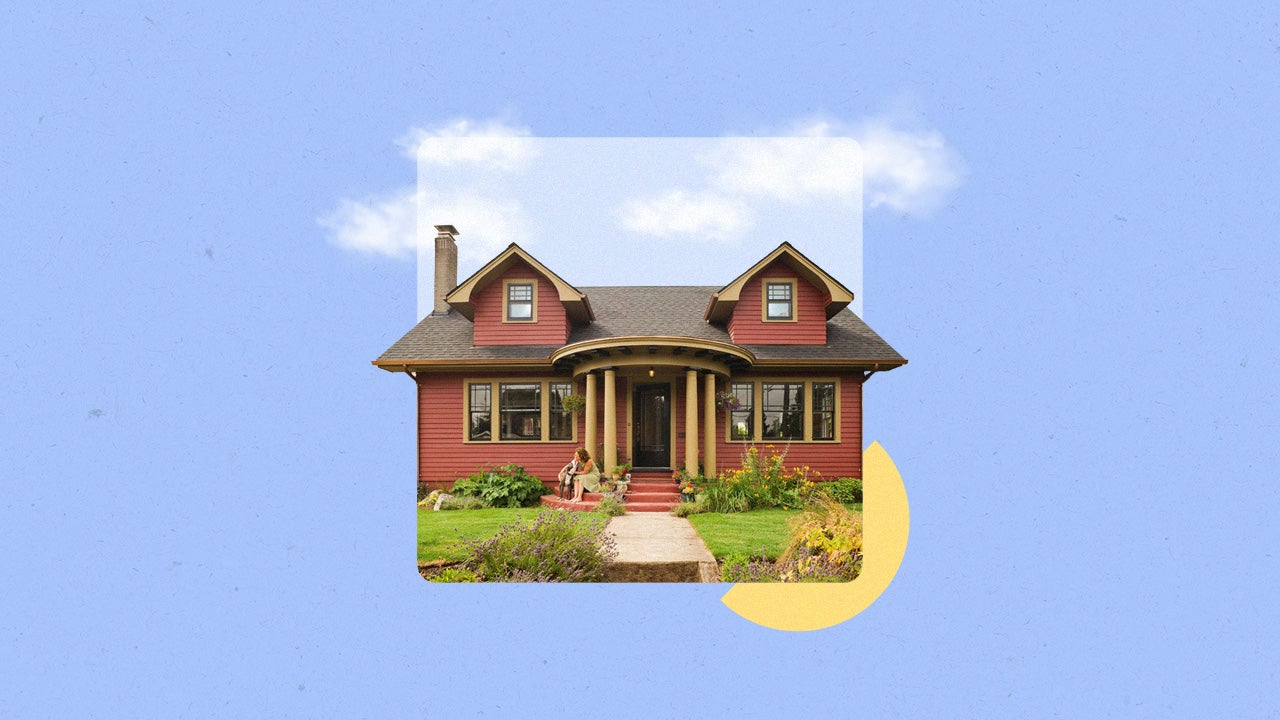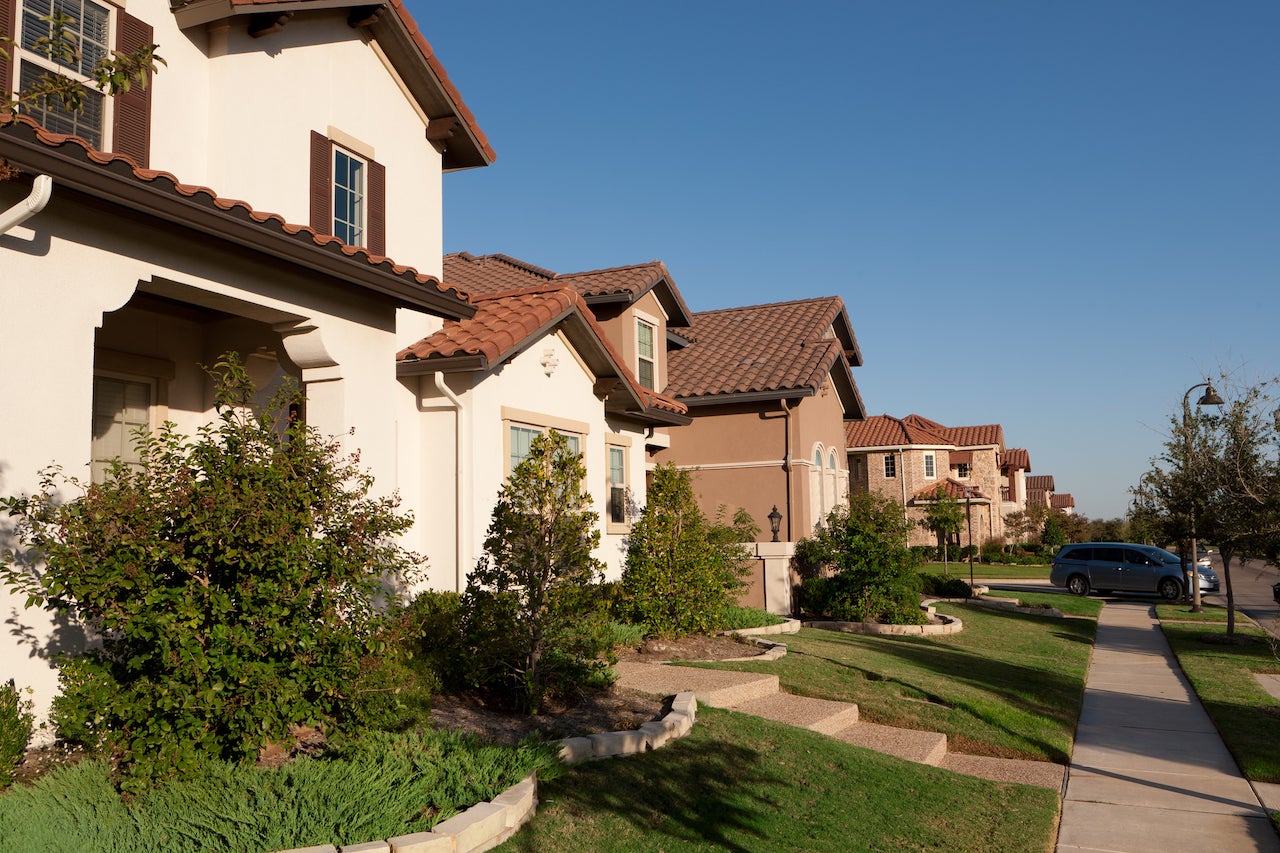What is an ADU, and can building one increase your home value?

Key takeaways
- ADU stands for accessory dwelling unit, a second, smaller dwelling located on the same property as the main single-family residence.
- ADUs can be attached or freestanding and can be used to house family members or generate rental income.
- Laws surrounding ADUs can vary widely, so carefully check your town’s building and zoning regulations before planning to build one.
With housing in short supply, and high home prices and mortgage rates leading many people to maximize the space they already have rather than buy something new, it’s no wonder accessory dwelling units have seen a spike in popularity of late.
Called ADUs for short, these small, secondary housing units — typically located on the same grounds as a larger single-family home — cost much less to build than a traditional house. ADUs can take many different forms, whether it’s a small detached building, a basement apartment, a converted garage or some other area that’s been turned into living quarters. These extra spaces (you may also hear them called granny flats, casitas, guesthouses or in-law suites) can be a cost-effective way to update your property to suit your family’s current needs, and can boost its value as well. They can also provide a source of extra income, if you rent it out or list it on services like Airbnb.
Here’s what you need to know about accessory dwelling units, and what goes into creating one.
What is an ADU?
“It’s sort of funny, but there’s no precise definition of what it is,” says Natalia Siniavskaia, assistant VP of housing policy research at the National Association of Home Builders. “The definition is fluid.”
Indeed, different states define it differently, but generally an ADU is a second small dwelling right on the same grounds as your regular single-family residence; it can be either a separate building or attached to the main house or an adjacent structure on the property. You could set up an apartment in the basement of your home or build one over your garage, for example, or even build a tiny house on its own foundation set in your backyard.
“Most people associate ADUs with at least a separate entrance, providing an opportunity for independent living,” Siniavskaia says. Generally, that means it has its own kitchen and bathroom facilities, as well.
No matter where it’s located or what it contains, the ADU is considered a part of your property and your real estate lot. It has no separate address, and you cannot legally sell it on its own (even if it’s a separate building). It only goes on the market when your residence does, and it’s considered part of the property being offered.
What’s involved in creating an ADU?
Local zoning laws and regulations are crucial here. First and foremost is ensuring that your ADU is legal, “making sure you can obtain the permits and meet legal requirements,” says Siniavskaia. If your paperwork isn’t in order, it could lead to complications when you’re ready to sell your house — an unpermitted ADU could result in costly renovations to get things up to snuff before closing.
Individual municipalities have their own regulations when it comes to ADUs, so it’s important to know what rules govern your project before you start the work. Regulations vary about whether it’s legal to add one at all, and if you can, how large it can be, how close it can be to the property line and any number of other factors.
Check with your local government regarding permits. Many counties allow ADU permitting in single-family zoning districts, provided they meet specific standards imposed by the municipality. These can include having the owner occupy one of the buildings on the property, designs that are compatible with other homes in your neighborhood, minimum lot sizes, parking spaces and more. A contractor’s expertise can help you with all of this: They should be well-versed in the local government’s guidelines for ADUs and can take care of permits for you.
Keep in mind that if you live within a homeowners association, you may have another level of complexity to deal with. HOAs often have stricter rules than the municipality, so you’ll need to review their guidelines for construction.
Logistical requirements
From a legal standpoint, an ADU typically must be an independent living space, suitable for year-round habitation. Along with its separate entrance, it usually needs a bedroom, bathroom and kitchen; it must also have heating, ventilation and air conditioning (HVAC) and plumbing systems.
If it’s an attached unit, such as in the basement or in the garage, the ADU usually shares the same electrical and plumbing facilities as the main home. “I have gone with wall heaters and AC units since they are cheap and safe,” says Eli Pasternak, founder of Liberty House Buying Group, a Miami real estate investment company that buys, renovates and resells properties. “You can also opt for ductless mini-splits, which are highly efficient and run throughout the year.”
If it’s a separate dwelling, the ADU could have its own systems. Try to place it close to the main house, though, as this can lower labor costs to extend power lines and piping.
How much does it cost to build an ADU?
The cost of creating an ADU varies tremendously depending on the size and type of structure you want to build — and keep in mind that choosing luxury finishes can bump up the price considerably. Here’s a breakdown of basic ADU building costs, according to data from Homeguide:
| Type of ADU | Average cost per square foot | Average cost for a 600-square-foot unit |
|---|---|---|
| Prefab unit | $80 – $160 | $50,000 – $100,000 |
| Attached unit | $125 – $225 | $75,000 – $135,000 |
| Detached unit | $150 – $250 | $90,000 – $150,000 |
| Above-garage unit | $200 – $500+ | $125,000 – $300,000 |
| Garage conversion | $50 – $200 | $20,000 – $140,000 |
| Basement conversion | $50 – $100+ | $30,000 – $60,000 |
Even for a factory-made prefab unit, you will likely need a contractor’s services to build an ADU and make sure the electrical, plumbing and HVAC systems are properly installed. Labor will make up 40 percent to 60 percent of your project’s costs, according to Homeguide, so make sure to budget accordingly.
Can you finance the cost?
If you don’t have the money to spend up front, you have options when it comes to paying for your ADU project:
- Construction loans: This type of short-term financing is specifically targeted at financing home-construction projects.
- Home equity: Whether through a cash-out refinance, home equity loan or home equity line of credit, you may be able tap into the equity you’ve already built in your home to pay for the improvements.
- Grant programs: As more municipalities realize that ADUs can help address housing shortages, they may start rolling out construction grants and incentives.
- Personal loans or credit cards: These can be more expensive ways to finance a large project, but if you’re disciplined about making payments, they can be another option.
How much home value does an ADU add?
Like any home-improvement project, adding an ADU can help increase your home’s value once you’re ready to sell, increasing the livable square footage and adding bonuses that local real estate comps might not have. However, also like any home-improvement project, it likely won’t recoup its full cost at resale. It’s worth adding one if you truly want and will use it, but it’s probably not if you’re just looking for a way to up your sale price.
In the short term, however, ADUs can provide value in the shape of rental income. When determining prices for your tenant, Pasternak suggests “poking around in your neighborhood and seeing what the average rent for an apartment is, and creating a range within which you can choose to charge.” Be warned that an ADU may increase your property taxes, but “you can easily pass this on to renters,” he says.
Bottom line
Accessory dwelling units can be a great way for homeowners to increase the functionality of their property and can be a boost to the asking price when it comes time to sell. But creating an ADU is a complex task, both legally and literally, and some areas do not allow them. It’s crucial to make sure the project is legal and correctly permitted, or it can become an expensive headache. While gaining approval and the investment to build might seem daunting, the end result is you’ll create a living space your family or tenant can use, and you’ll likely increase your home’s worth down the road.
You may also like









